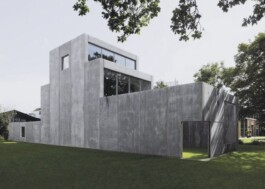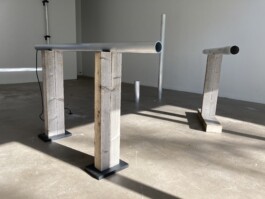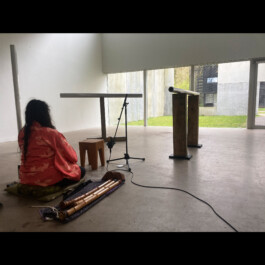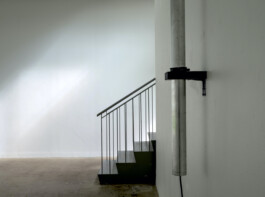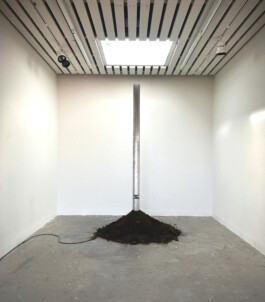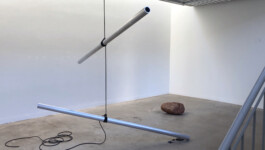
‘sequential intersection_1-8’
Sculptural Sound Installation - Shakuhachi Flute Recording (9'21"), Alloy Pipes, 6cm Diameter Speakers, Reclaimed Wood, Cables, Earth, Rock
The work sequential intersection_1-8 uses a series of steel pipes, discovered laying disused in a metal workshop in Struer, Denmark, to create a ‘sequential instrument’ throughout the Four Boxes Gallery. Playing from each pipe is a looping series of notes played on the shakuhachi flute, by flutist Kiku Day. The playback of the notes via the pipe structures may be considered as an ‘abstract sequential composition’, experienced as one passes through the Four Boxes Gallery building from the garden to the upper room.
The sonic material itself, composed in collaboration between Ross Alexander and Kiku Day specifically for the installation and recorded within the Four Boxes space, is based on the traditional Zen-buddist composition ‘Ajikan’ which is intended to represent the Zen concept of "seeing with the heart" as opposed to seeing with one's eyes. The "a" of the title Ajikan may denote something harmonious or peaceful: its conjunction with "ji" representing the primary or original sound: and the word "kan" meaning "to see". Thus the piece can be considered to represent "seeing the original sound", a special sort of vision associated with enlightenment. Additionally, the “A” in Ajikan is considered within certain forms of Buddhism to be the first sound uttered by humans once they open their mouths and may be used to represent a ‘first step’ or the essence of being, the ground from which all phenomena emerge. In this sense, it may be interpreted as a symbol of "nothingness" or emptiness, not in the sense of absence, but rather as the ultimate source of all existence. Whilst interpretations of the piece may widely differ, it is sometimes considered representative of the journey of human beings from birth to death based on the sacred scriptures of Buddhism.
The material nature and form of the found and re-purposed industrial piping define the conceptual and aesthetic origin of the work, whilst the use of the shakuhachi flute and the ensuing sequential composition reference the building’s design and architectural associations, alongside the artist’s extensive interest in shakuhachi music and Zen-buddhism. The various interactions between the installational structures and the natural environment gesture towards the mono-ha art movement and its work exploring the interactions of natural and industrial materials, itself a source of inspiration for the artist and his work.
